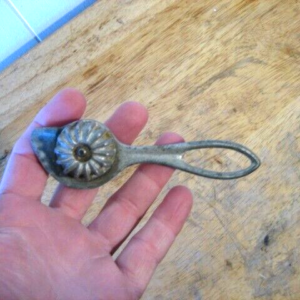The Vintage Duck Press: History, Usage, and Legacy
History
The vintage duck press, a symbol of culinary artistry, originated in 19th-century France. It gained popularity in the late 1800s, particularly in upscale Parisian restaurants. French chefs created this unique device for “Canard à la Presse” or “pressed duck,” showcasing both culinary skill and theatrical flair.
Made of heavy brass or cast iron, these presses extracted every bit of flavor from a duck. Their intricate designs reflected the prestige of the establishments using them. Mastering the duck press required not only skill but also a deep understanding of French culinary traditions.
Usage
Using a vintage duck press involves both culinary and performative art. The process starts with roasting a duck to rare doneness. The legs and breast are removed and set aside, while the carcass, with bones and some meat, goes into the press.
The press’s mechanics then come into play. The chef turns a wheel or lever, exerting pressure on the carcass to extract the blood, juices, and marrow. This rich liquid is collected and used to create a sauce, which is combined with cognac, red wine, and sometimes butter. The reserved duck breast is then sliced and served with this luxurious sauce.
This method ensures no part of the duck goes to waste, resulting in a dish rich in flavor and tradition. The preparation and serving of pressed duck often become the dining experience’s centerpiece, showcasing the chef’s expertise and commitment to classical techniques.
Legacy
The legacy of the vintage duck press lies in its elegance, tradition, and culinary excellence. Although modern cooking techniques have evolved, the duck press remains revered among culinary historians and chefs. It symbolizes a time when dining was about experiencing the chef’s artistry and skill.
Today, vintage duck presses are prized collectibles, found in high-end antique stores, auctions, and museums. They serve as both functional tools and decorative pieces, evoking nostalgia and admiration for classic French cuisine.
Some contemporary chefs still use duck presses to preserve and celebrate traditional French cooking methods. They value the press for producing intensely flavored sauces that modern equipment cannot replicate. Using a duck press in a restaurant today often nods to culinary history, offering diners a taste of the past.
In conclusion, the vintage duck press is more than just a cooking device; it represents the rich history and tradition of French cuisine. Its continued appreciation and use reflect respect for the culinary arts and a desire to preserve past flavors and techniques. As both a practical tool and a historical artifact, the duck press holds a special place in gastronomy.



